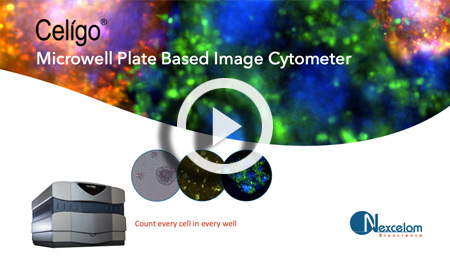Gene Therapy References
[1] https://www.asgct.org/education/more-resources/gene-and-cell-therapy-faqs
[2] Friedmann T, Roblin R. Gene therapy for human genetic disease. Science. 1972;175:959-955.
[3] Friedmann T. A brief history of gene therapy. Nat Genet. 1992;2:93-98.
[4] https://www.exploregenetherapy.com/history-of-gene-replacement-therapy
[5] U.S. FDA. 2020. Chemistry, Manufacturing, and Control (CMC) Information for Human Gene Therapy Investigational New Drug Applications (INDs). Available at: https://www.fda.gov/regulatory-information/search-fda-guidance-documents/chemistry-manufacturing-and-control-cmc-information-human-gene-therapy-investigational-new-drug
[6] U.S. FDA. 2020. Human Gene Therapy for Hemophilia. Available at: https://www.fda.gov/regulatory-information/search-fda-guidance-documents/human-gene-therapy-hemophilia
[7] U.S. FDA. 2020. Human Gene Therapy for Rare Diseases. Available at: https://www.fda.gov/regulatory-information/search-fda-guidance-documents/human-gene-therapy-rare-diseases
[8] U.S. FDA. 2020. Human Gene Therapy for Retinal Diseases. Available at: https://www.fda.gov/regulatory-information/search-fda-guidance-documents/human-gene-therapy-retinal-disorders
[9] U.S. FDA. 2020. Interpreting Sameness of Gene Therapy Products Under the Orphan Drug Regulations. Available at: https://www.fda.gov/regulatory-information/search-fda-guidance-documents/interpreting-sameness-gene-therapy-products-under-orphan-drug-regulations
[10] U.S. FDA. 2020. Long Term Follow-up After Administration of Human Gene Therapy Products. Available at: https://www.fda.gov/regulatory-information/search-fda-guidance-documents/long-term-follow-after-administration-human-gene-therapy-products
[11] U.S. FDA. 2020. Testing of Retroviral Vector-Based Human Gene Therapy Products for Replication Competent Retrovirus During Product Manufacture and Patient Follow-up. Available at: https://www.fda.gov/regulatory-information/search-fda-guidance-documents/testing-retroviral-vector-based-human-gene-therapy-products-replication-competent-retrovirus-during
[12] Goswami R, Subramanian G, Silayeva L, et al. Gene therapy leaves a vicious cycle. Front Oncol. 2019;9:297. doi: 10.3389/fonc.2019.00297
[13] Van Haasteren J, Li J, Scheideler OJ, et al. The delivery challenge: fulfilling the promise of therapeutic genome editing. Nat Biotechnol. 2020. doi: 10.1038/s41587-020-0565-5
[14] Zheng PP, Kros JM, Li J. Approved CAR T cell therapies: ice bucket challenges on glaring safety risk and long-term impacts. Drug Dis Today. 2018;23:1175-1182. doi: 10.1016/j.drudis.2018.02.012
[15] Feins S, Kong W, Williams EF, et al. An introduction to chimeric antigen receptor (CAR) T-cell immunotherapy for human cancer. Am J Hematol. 2019;94:S3-S9. doi: 10.1002/ajh.25418
[16] Mohanty R, Chowdhury CR, Arega S, et al. CAR T cell therapy: A new era for cancer treatment. Oncol Rep. 2019;42:2183-2195. doi: 10.3892/or.2019.7335
[17] Senís E, Farouros C, Große S, et al. CRISPR/Cas9-mediated genome engineering: an adeno-associated viral (AAV) vector toolbox. Biotechnol J. 2014;9:1402-1412. doi: 10.1002/biot.201400046
[18] Hidai C, Kitano H. Nonviral gene therapy for cancer: a review. Diseases. 2018;6:57. doi: 10.3390/diseases6030057
[19] Milone MC, O’Doherty U. Clinical use of lentiviral vectors. Leukemia. 2018;32:1529-1541.
[20] Rosenblum D, Gutkin A, Dammes N, et al. Progress and challenges towards CRISPR/Cas clinical translation. Adv Drug Deliv Rev. 2020. doi: 10.1016/j.addr.2020.07.004
[21] Lundstrom K. Viral vectors in gene therapy. Diseases. 2018;6:42.
[22] Garcia-Perez L, Ordas A, Canté-Barrett K, et al. Preclinical development of autologous hematopoietic stem cell-based gene therapy for immune deficiencies: a journey from mouse cage to bed side. Pharmaceutics. 2020;12:549. doi: 10.3390/pharmaceutics12060659
[23] Zhang Z, Stickney Z, Duong N, et al. AAV-based dual-reporter circuit for monitoring cell signaling in living human cells. J Biol Eng. 2017;11:18. doi: 10.1186/s13036-017-0060-9
[24] Domenger C, Grimm D. Next-generation AAV vectors—do not judge a virus (only) by its cover. Hum Mol Genet. 2019;28:R3-R14.
[25] Wang D, Tai PWL, Gao G. Adeno-associated virus vector as a platform for gene therapy delivery. Nat Rev Drug Discov. 2019;18:358-378. doi: 10.1038/s41573-019-0012-9
[26] Addgene. Viral vectors 101: A desktop resource. Downloadable from Addgene.org
[27] Brouillette M. Strategies for smuggling gene therapies past the immune system. The Scientist 2019 July/August. Available at https://www.the-scientist.com/lab-tools/strategies-for-smuggling-gene-therapies-past-the-immune-system-66120
[28] Kruzik A, Fetahagic D, Hartlieb B, et al. Prevalence of anti-adeno-associated virus immune responses in international cohorts of healthy donors. Mol Ther Methods Clin Dev. 2019;14:126-133. doi: 10.1016/j.omtm.2019.05.014
[29] Thaci B, Ulasov IV, Wainwright DA, Lesniak MS. The challenge for gene therapy: innate immune response to adenoviruses. Oncotarget. 2011;2:113-121. doi: 10.18632/oncotarget.231
[30] Verdera HC, Kuranda K, Mingozzi F. AAV vector immunogenicity in humans: a long journal to successful gene transfer. Mol Ther. 2020;28:723-746. doi: 10.1016/j.ymthe.2019.12.010
[31] Shirley JL, de Jong YP, Terhorst C, et al. Immune responses to viral gene therapy vectors. Mol Ther. 2020. doi: 10.1016/j.ymthe.2020.02.001
[32] https://www.sciencehistory.org/distillations/the-death-of-jesse-gelsinger-20-years-later
[33] Britten CM, Walter S, Janetzki S. Immunological monitoring to rationally guide AAV gene therapy. Front Immunol. 2013. doi: 10.3389/fimmu.2013.00273
Learn more:
Gene Therapy References

